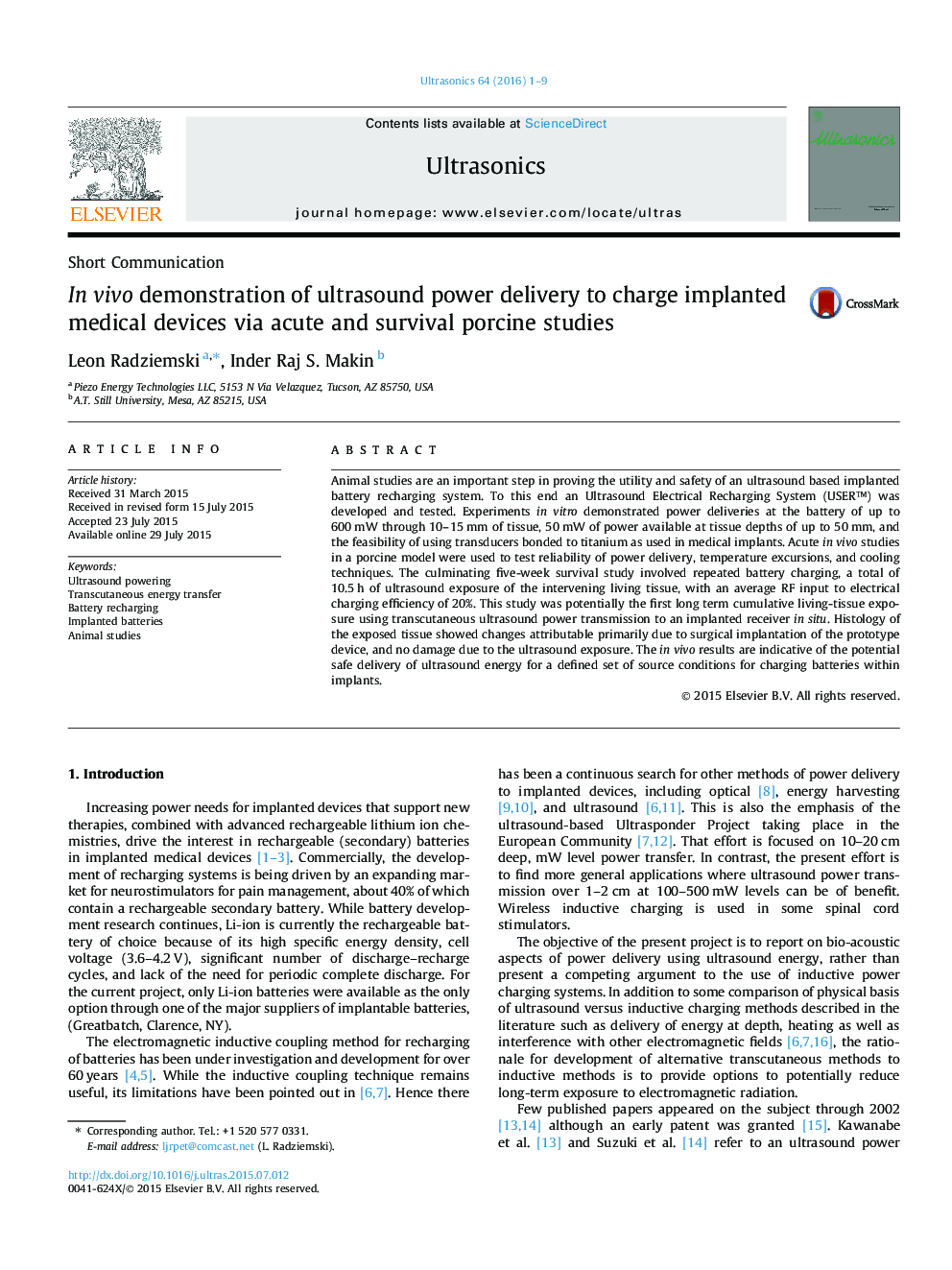| Article ID | Journal | Published Year | Pages | File Type |
|---|---|---|---|---|
| 1758589 | Ultrasonics | 2016 | 9 Pages |
•Demonstrated in vitro, 0.6 W of transcutaneous ultrasound power transfer to an implant.•Optimized Ultrasound Electrical Recharging – USER system operation for porcine tests.•Developed cooling options for system heat extraction including the implanted receiver.•Demonstrated USER charging of medical implant battery in a 25-day survival experiment.
Animal studies are an important step in proving the utility and safety of an ultrasound based implanted battery recharging system. To this end an Ultrasound Electrical Recharging System (USER™) was developed and tested. Experiments in vitro demonstrated power deliveries at the battery of up to 600 mW through 10–15 mm of tissue, 50 mW of power available at tissue depths of up to 50 mm, and the feasibility of using transducers bonded to titanium as used in medical implants. Acute in vivo studies in a porcine model were used to test reliability of power delivery, temperature excursions, and cooling techniques. The culminating five-week survival study involved repeated battery charging, a total of 10.5 h of ultrasound exposure of the intervening living tissue, with an average RF input to electrical charging efficiency of 20%. This study was potentially the first long term cumulative living-tissue exposure using transcutaneous ultrasound power transmission to an implanted receiver in situ. Histology of the exposed tissue showed changes attributable primarily due to surgical implantation of the prototype device, and no damage due to the ultrasound exposure. The in vivo results are indicative of the potential safe delivery of ultrasound energy for a defined set of source conditions for charging batteries within implants.
